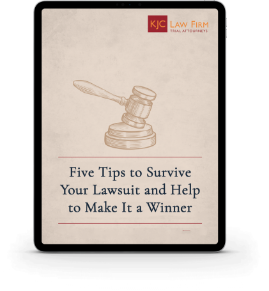What You Should Know About the Proposed Title IX Revisions
New Title IX provisions went into effect on August 14, 2020, drastically reducing the protections the statute provided to prevent sexual harassment and assault despite overwhelming evidence that sexual assaults on campus are at epidemic levels. Here is what you need to know about the recent changes and what to expect on campuses starting in the fall of 2020.
In 2017, Secretary Betsy Devos, at the helm of the Department of Education (DOE), rescinded the previous administration’s 2011 guidance on Title IX, also known as the Dear Colleague Letter (DCL), with the promise that revisions for the legislation would be released soon.
The purpose of the DCL guidance was to remind schools, any institutions receiving federal funding, of their obligations to prevent and address sexual violence under Title IX, which would be monitored by the Office for Civil Rights (OCR).
Devos and the DOE released their revisions to Title IX with the purpose of providing institutions with even more clarity, as well as promised due rights for all. Devos is quoted saying, “Every survivor of sexual violence must be taken seriously, and every student accused of sexual misconduct must know that guilt is not predetermined.”
title_ix_proposed_changes
Following the release of the revisions, a 60-day comment period commenced, which has since closed with an outpouring of public commentary – over 100,000 submissions. Many institutions as well as congress members have raised concerns that these changes could drastically reduce victims coming forward to report any type of sexual discrimination, reduce protections for survivors, and make investigations ineffective.
Side-by-Side Look at the Major Differences
Devos and the DOE wanted to bring more clarity to three areas of confusion while revising Title IX law: what constitutes sexual harassment, what triggers a school’s legal obligation to respond, and how a school must respond.
Below you will find a side-by-side comparison of four of the most notable proposed revisions by Devos and the DOE. If you would like to see the DOE’s released proposed Title IX revisions in full, please click here.
| Institution’s Responsibility | |
| Current | Proposed |
| “Whether or not a student files a complaint of alleged sexual misconduct or otherwise asks the school to take action, where the school knows or reasonably should know of an incident, the school must take steps to understand what occurred and respond appropriately..” | “the alleged harassment must involve conduct that has occurred within the school’s program or activity – whether the harassment occurred at a location or under circumstances where the school owned the premises, exercised oversight, supervision, or discipline over the location or participants…” |
| The Definition of Sexual Harassment | |
| Current | Proposed |
| “any unwelcome sexual conduct, such as unwelcome sexual advances, requests for sexual favors, and other verbal, nonverbal, or physical conduct of a sexual nature.” | “unwelcome conduct on the basis of sex that is so severe, pervasive, and objectively that it effectively denies a person equal access to the recipient’s education program or activity.” |
| Due Process | |
| Current | Proposed |
| “During the hearing, they also have the same rights to see each other’s written statements and to present evidence and witnesses, including character witnesses. Allowing parties to personally question or cross-examine one another at a hearing is strongly discouraged.” | “…a final determination must be made at a live hearing, and cross-examination must be allowed (with rape shield protections against asking about a complainant’s sexual history) and must be conducted by each party’s advisor (i.e., no personal confrontation allowed).” |
| Standard of Proof | |
| Current | Proposed |
| Before 2017, the OCR has always affirmed that the appropriate standard is a preponderance of the evidence (POTE). Since the DCL letter was rescinded, schools have had the option of their choosing, but many have kept POTE. | “…by applying either the preponderance of the evidence standard or the clear and convincing evidence standard; however, a school can use the lower preponderance standard only if it uses that standard for conduct code violations that carry the same maximum disciplinary sanction..” |
So What’s Next for Title IX?
Although there wasn’t a timeline released for the DOE to put these revisions into effect, there is speculation that it will take many months before they are put into law due to the public submissions, potential and pending lawsuits, and legislative advocacy at the hands of Congress.
The Campus Accountability & Safety Act (CASA) and the Reauthorization of the Higher Education Act could also play a role in the outcome of these provisions.
At the end of the day, institutions can still implement strict, campus-specific protections for their students to forbid sexual discrimination of any kind, ensure rights for survivors, and ensure a safe educational environment for all students.
Want More Information? Contact the KJC Law Firm
At the KJC Law Firm, we strive to hold wrongdoers accountable in order to get justice for our clients. For cases involving Title IX violations, there are a variety of options and remedies available that can be pursued with the help of an experienced attorney, such as filing a formal complaint with the Department of Education’s Office of Civil Rights or filing a complaint against the school in the federal courts seeking monetary damages and/or injunctive relief.
If you think you or someone you know has been discriminated against on the basis of sex by a school – either during the school’s handling and investigation of a sexual discrimination complaint or during the grievance procedure that follows – then the KJC Law Firm may be able to help. To discuss your options and learn more about whether your circumstances involve a Title IX violation, please contact the KJC Law Firm here to schedule a free consultation with one of our attorneys.





